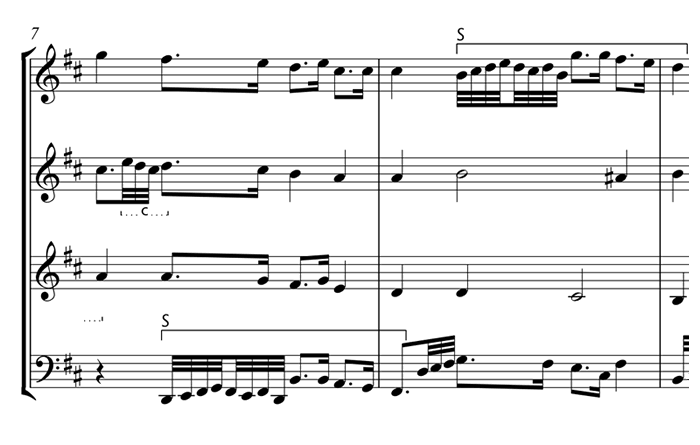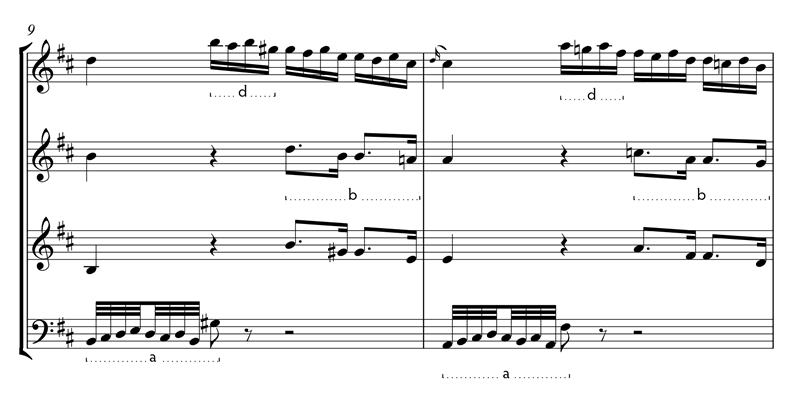Analysis of Bach's fugue BWV 850 in D Major (WTC I)
Lemuel Maldonado
I. Exposition
In this four voices fugue the voices enter in the following order: bass, tenor, alto and soprano. The subject starts on the tonic while the real answer is presented on the dominant. A one measure codetta prepares the tenor voice on the fourth measure. The fourth voice enters in the fifth measure and the exposition ends in the sixth measure. In the following animation you can listen to the exposition. We have marked the subjects (S) and the answers (A):
The motives in the subject and in the codetta will be used throughout the fugue. Letters a to d will be used for their identification:

Motive a is made from the 32nd notes of the subject while motive b is made from the second part. Motive c and d appears in the codetta. Motive d is the transformation by augmentation of the second group of notes from motive a:

II. Episode
A short, one measure episode using motives a, b and c follows the exposition. Motive c leads us to the episode and it is transformed by inversion on the alto voice in measure 7:
III. Presentation of the Subject
The subject appears in measure 7 in D major followed by the soprano in measure 8 beginning on B and making a cadence to the key of B minor in measure 9:
IV. Episode
A second episode begins in measure 9 using motives a, b and d:
V. Presentation of the Subject
Measure 10 presents a D dominant chord (second beat) to prepare several subject presentations:
- Measure 11: the bass makes a false entry of the subject starting on a G and preparing the soprano's entry also on a G but harmonized with an E minor chord (vi degree of G major).
- Measure 12 and 13: alto and soprano present the subject starting on a D over a B minor harmony.
- Measure 14: tenor starting on G (E minor chord, vi degree of G major).
- Measure 15: bass on E minor key followed by a cadence to the same key.
The previously discussed motives are always present:
VI. Episode and coda
Before the coda, a long episode begins in measure 16. Motives a - d are always present. The last measures are specially interesting: two measures using motive a (or the first part of the subject) followed by two measures using motive b (second part of the subject).
Follows the complete fugue. We have marked the subjects (S) and answers (A). In each page we have also marked the first appearance of each motive:
Related links:
- Other recordings by Joe Renouf at Piano Society
- Score in Petrucci Music Library
© 2011 Lemuel Maldonado. Published by teoria.com


